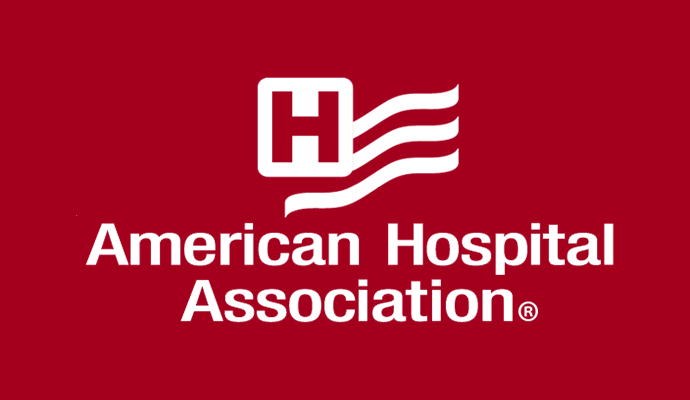New AHA report paints dire financial picture for hospitals
A new report from the American Hospital Association finds that reimbursement is not keeping pace with the high costs of labor, drugs and supplies.

Source: American Hospital Association/Xtelligent Healthcare Media
- Hospitals are in a precarious financial position, according to a new report from the American Hospital Association (AHA).
Hospitals and health systems are up against persistently high expenses for labor, prescription drugs and supplies as inflation exacerbates the issue. Meanwhile, government reimbursement through Medicare and Medicaid has not kept pace with hospital costs for patient care nor the rate of inflation, which grew by 12.4% between 2021-2023, more than two times faster than Medicare reimbursement for hospital inpatient care (5.2%), AHA reports.
The issues taken together paint an uncertain financial picture for hospitals and health systems, which are operating with little to no margin, the report states.
Recent hospital financial performance data suggests that operating margins are starting to stabilize after the COVID-19 pandemic. However, the AHA maintains that this improvement in hospital financial performance is merely “modest stabilization from historic lows” and the “hospital field is still far from where it needs to be to meet the demand for care, invest in new and promising technologies and interventions, and stand ready for the next health care crisis.”
The latest AHA report on the cost of care finds that the number of days cash on hand for hospitals and health systems has fallen by 28.3% since the start of 2022. This decline is contributing to an aging hospital infrastructure, which data shows increased by 7.1% in 2023 in terms of the average age of capital investments for medical equipment and infrastructure.
READ MORE: Hospital profitability dips as expenses bog down margins
“While the constraints and burdens of increasing plant age present serious challenges to hospitals and health systems in their own right, the inability to make needed capital investments has contributed to bond rating agencies issuing rating downgrades, making it harder for some hospitals and health systems to borrow money,” the report continues.
Additionally, the report reveals a nearly $130 billion underpayment to hospitals and health systems serving Medicare and Medicaid beneficiaries in 2022. Medicare alone paid just 82 cents on the dollar for their beneficiaries who received hospital care, contributing $100 billion to the reimbursement shortfall.
But government payers aren’t the only source of financial challenges for hospitals and health systems, the report emphasizes. Reimbursement for some services, such as inpatient behavioral health and burn and wound services, consistently falls below the actual costs of care across all payer types. Hospitals are also increasingly delivering behavioral health services in their emergency departments, according to the report.
Underpayments to hospitals and health systems impede the delivery of essential community services, especially in rural areas, AHA explains.
Finally, high costs across administrative services, supply chain and workforce are creating challenges for hospitals and health systems, the report says.
READ MORE: Market consolidation worse among payers than health systems
Hospitals have faced an increase in costs because of commercial payer practices, such as prior authorizations and costly claim denials. Both practices are on the rise, adding to hospital expenses and premium costs.
Administrative costs are building to total hospital expenses, which have remained high since the pandemic. The report finds that hospitals spent $115 billion on drug expenses in 2023, as the median annual list price for a new drug topped $300,000 that year. At the same time, many drugs experienced severe shortages, with an average of 301 shortages per quarter during the period.
Supply chain costs have been up overall, comprising 10.5% of the average hospital’s budget. In total, medical supply expenses accounted for $146.9 billion in 2023, an increase of $6.6 billion over 2022, AHA reports using data from Strata Decision Technology.
Labor costs also increased by more than $42.5 billion between 2021 and 2023, bringing the total to $839 billion. Hospitals and health systems have had to dedicate more resources to their workforce, including expensive contract labor sources to fill gaps in care demands amid staffing shortages.
Hospital employee compensation has also outpaced inflation at a rate of 45% from 2014 through 2023. Hospitals and health systems are investing more in their employees to reduce turnover, increase retention and maintain competition.
READ MORE: Why diversifying clearinghouse, banking partners is crucial
Labor now accounts for almost 60% of the average hospital’s expenses, according to the report.
“As this report clearly highlights, increased expenses, workforce challenges, and growing administrative burden are unsustainable and creating headwinds and obstacles that threaten access to care for millions of Americans,” AHA President and CEO Rick Pollack said in a statement.
“The AHA urges Congress and the Administration to take action to strengthen hospitals and health systems and bolster access to care for all patients and communities,” Pollack continued.
Actions the AHA recommends include rejecting Medicare and Medicaid cuts to hospital care, including site-neutral payment proposals, supporting workforce policies, protecting the 340B Drug Pricing Program from changes, and holding commercial payers accountable for disruptive administrative practices, such as prior authorizations.
